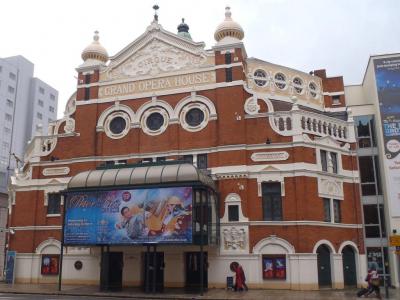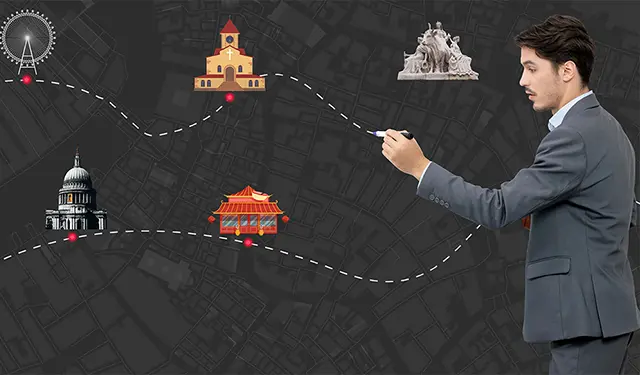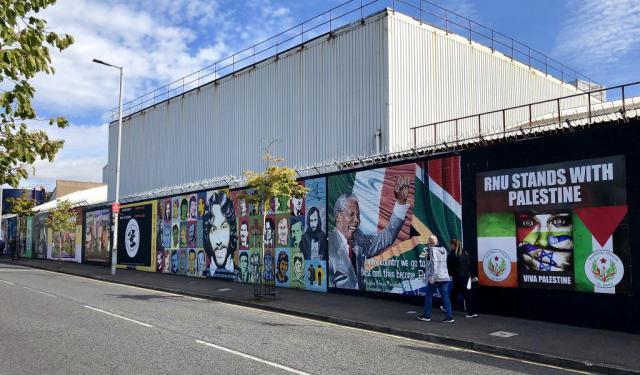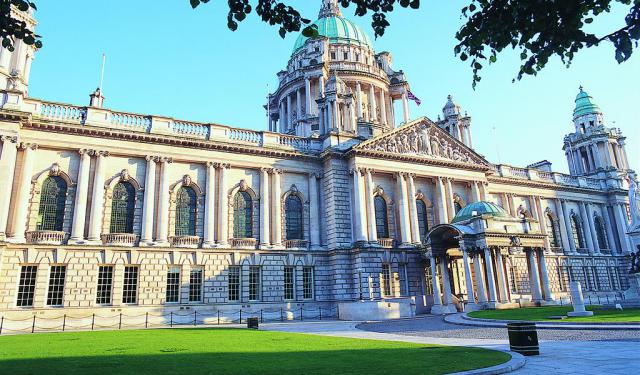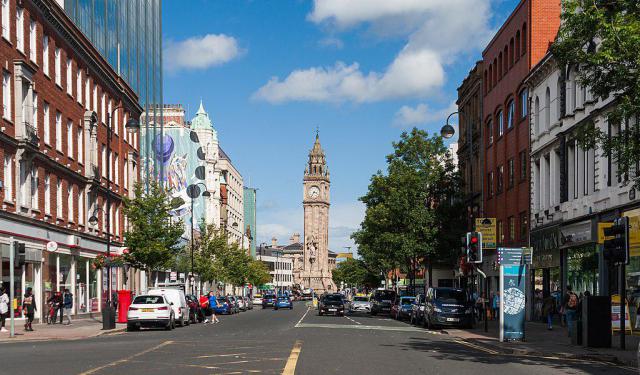Grand Opera House, Belfast (must see)
Nestled in the vibrant heart of Belfast, the Grand Opera House is an architectural gem and cultural linchpin. Designed by famed theatre architect Frank Matcham, it opened in December 1895 as the “New Grand Opera House and Cirque”. A striking example of Victorian “oriental style” theatre architecture, its main auditorium is widely regarded as the best preserved in the UK.
For over a century, the Grand Opera House has been a pulsating centre for the arts. It has survived tumultuous times, including wartime repurposing, bomb damage during the Troubles, and even a brush with demolition-but was rescued and listed as Northern Ireland’s first protected building in the 1970s. After extensive renovations in 1980, 2006, and a major £12.2 million restoration in 2020–21, both its ornate auditorium and modern foyers shine brighter than ever.
Today, the venue boasts a 1,058‑seat main auditorium, the intimate Baby Grand studio, and stylish bars on multiple floors. Its annual pantomime tradition continues unabated, delighting families since the very first season featured “Bluebeard” in 1895. Beyond entertainment, the Opera House offers behind‑the‑scenes tours and a compelling heritage exhibition, ideal for history lovers.
A visit here offers more than a show-it’s a journey through Belfast’s cultural soul. Whether you're drawn to grand musicals, drama, opera, dance, or comedy-or simply wish to admire its ornate mouldings and historic atmosphere-the Grand Opera House presents an unforgettable experience at the crossroads of past and present.
For over a century, the Grand Opera House has been a pulsating centre for the arts. It has survived tumultuous times, including wartime repurposing, bomb damage during the Troubles, and even a brush with demolition-but was rescued and listed as Northern Ireland’s first protected building in the 1970s. After extensive renovations in 1980, 2006, and a major £12.2 million restoration in 2020–21, both its ornate auditorium and modern foyers shine brighter than ever.
Today, the venue boasts a 1,058‑seat main auditorium, the intimate Baby Grand studio, and stylish bars on multiple floors. Its annual pantomime tradition continues unabated, delighting families since the very first season featured “Bluebeard” in 1895. Beyond entertainment, the Opera House offers behind‑the‑scenes tours and a compelling heritage exhibition, ideal for history lovers.
A visit here offers more than a show-it’s a journey through Belfast’s cultural soul. Whether you're drawn to grand musicals, drama, opera, dance, or comedy-or simply wish to admire its ornate mouldings and historic atmosphere-the Grand Opera House presents an unforgettable experience at the crossroads of past and present.
Want to visit this sight? Check out these Self-Guided Walking Tours in Belfast. Alternatively, you can download the mobile app "GPSmyCity: Walks in 1K+ Cities" from Apple App Store or Google Play Store. The app turns your mobile device to a personal tour guide and it works offline, so no data plan is needed when traveling abroad.
Grand Opera House on Map
Sight Name: Grand Opera House
Sight Location: Belfast, Ireland (See walking tours in Belfast)
Sight Type: Attraction/Landmark
Guide(s) Containing This Sight:
Sight Location: Belfast, Ireland (See walking tours in Belfast)
Sight Type: Attraction/Landmark
Guide(s) Containing This Sight:
Walking Tours in Belfast, Ireland
Create Your Own Walk in Belfast
Creating your own self-guided walk in Belfast is easy and fun. Choose the city attractions that you want to see and a walk route map will be created just for you. You can even set your hotel as the start point of the walk.
The Troubles and Peace Process Landmarks
Decades past the official end of The Troubles in Belfast, the price of peace in Northern Ireland remains high. One of the means with which to secure it, back in 1969, was erecting a wall to physically separate the capital's warring Protestant and Catholic communities. Known since as the Peace Wall, the structure has become a popular tourist attraction for the multiple murals painted thereon... view more
Tour Duration: 1 Hour(s)
Travel Distance: 2.1 Km or 1.3 Miles
Tour Duration: 1 Hour(s)
Travel Distance: 2.1 Km or 1.3 Miles
Belfast Victorian Architecture Jewels
Described as “modestly scaled, undemonstrative, somewhat solid in aspect, and usually restrained (sometimes even austere) in its use of external decoration”, the urban landscape of Belfast has been influenced by the demands of shipbuilding and linen industry, much as transitioning between culture, arts, commerce, and education. Still, the architectural spectrum of the city is quite broad and... view more
Tour Duration: 2 Hour(s)
Travel Distance: 2.9 Km or 1.8 Miles
Tour Duration: 2 Hour(s)
Travel Distance: 2.9 Km or 1.8 Miles
Belfast Introduction Walking Tour
For over a century, the political situation of Belfast, the capital of Northern Ireland, has been the source of strife, first between the Crown-loyal Protestants and Irish Catholics, and more recently between the United Kingdom and the European Union.
Sitting on the banks of the River Lagan where it meets the Irish Sea, the city owes its name to this coastal condition, with "Belfast"... view more
Tour Duration: 2 Hour(s)
Travel Distance: 3.8 Km or 2.4 Miles
Sitting on the banks of the River Lagan where it meets the Irish Sea, the city owes its name to this coastal condition, with "Belfast"... view more
Tour Duration: 2 Hour(s)
Travel Distance: 3.8 Km or 2.4 Miles
